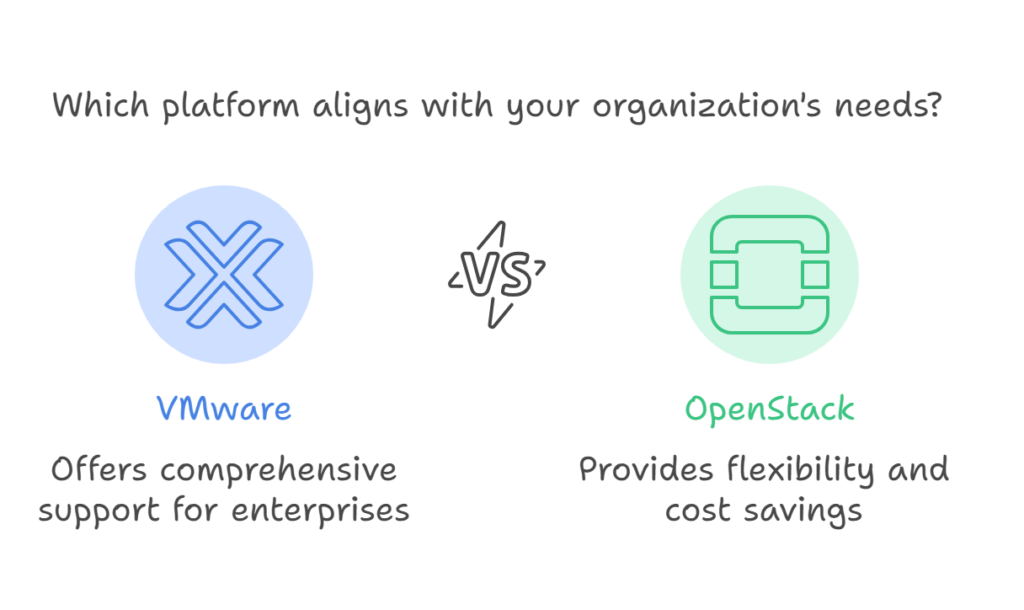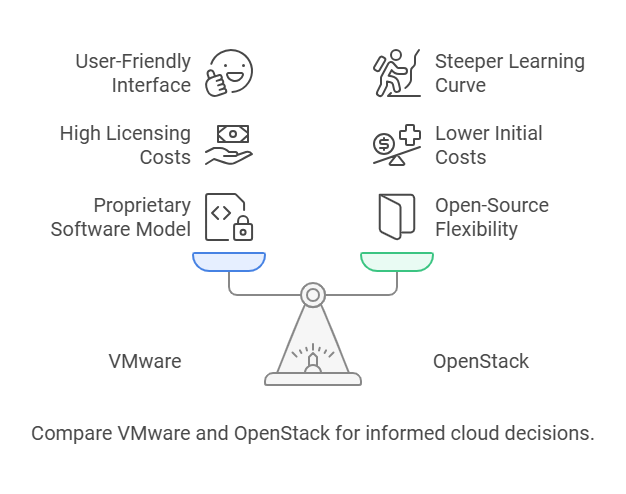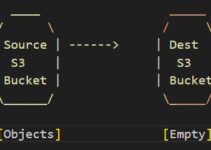In today’s digital landscape, businesses are increasingly turning to cloud computing solutions for scalability, flexibility, and cost-efficiency. Two leading players in this arena are VMware and OpenStack. But with both platforms offering cloud infrastructure management, choosing the right one for your organization can be a challenge. This blog post dives deep into the VMware vs. OpenStack debate, comparing their features, ease of use, and cost implications to help you make an informed decision.
Unveiling the Capabilities: A VMware vs. OpenStack Feature Face-Off
Understanding VMware and OpenStack
VMware, a household name in virtualization, offers a suite of commercial cloud management products. On the other hand, OpenStack is an open-source cloud operating system that allows businesses to build and manage their own private clouds.
Diving Deeper: Features of VMware vs. OpenStack
- VMware: Known for its robust feature set, VMware offers comprehensive solutions for:
- Virtualization: Core strength lies in creating and managing virtual machines (VMs).
- Security: Provides advanced security features to protect your cloud environment.
- Disaster Recovery: Offers built-in disaster recovery tools for business continuity.
- Management Tools: Extensive suite of tools simplifies cloud infrastructure management.
- OpenStack: While lacking some of VMware’s pre-built features, OpenStack offers a high degree of customization:
- Scalability: Easily scales to accommodate growing business needs.
- Integration: Integrates seamlessly with various hardware and software solutions.
- Open Source Community: Benefits from a large and active developer community.
- Customization: Allows for extensive customization to fit specific requirements.
Ease of Use: Out-of-the-Box vs. DIY
- VMware: VMware boasts a user-friendly interface and extensive documentation, making it easier to deploy and manage even for those with less technical expertise.
- OpenStack: OpenStack, on the other hand, requires a higher level of technical knowledge for setup and maintenance. This can be a hurdle for organizations without a dedicated IT team.
Cost Considerations: Upfront vs. Long-Term
- VMware: VMware requires purchasing licenses for its software, which can be expensive for large deployments. Additionally, there might be vendor lock-in associated with certain hardware requirements.
- OpenStack: OpenStack is free to use, making it an attractive option for cost-conscious businesses. However, the cost of setting up, maintaining, and potentially hiring technical expertise needs to be factored in.
Choosing the Right Platform: It Depends
Ultimately, the best choice between VMware and OpenStack depends on your specific needs and priorities. Consider these factors:
- Technical Expertise: If you have a skilled IT team, OpenStack’s flexibility might be a good fit. For less technical teams, VMware’s ease of use is a plus.
- Budget: While OpenStack is free upfront, consider ongoing maintenance costs. Factor in potential licensing costs for VMware.
- Scalability Needs: Consider how much your cloud infrastructure needs to grow in the future.
VMware vs. OpenStack: Feature Comparison
| Feature | VMware | OpenStack |
| Virtualization | Core competency, strong foundation | Requires additional configuration |
| Security | Advanced security features built-in | Highly customizable security |
| Disaster Recovery | Built-in disaster recovery tools | Requires additional tools |
| Management Tools | Extensive suite of tools for easy use | Fewer built-in tools, requires some scripting |
| Scalability | Limited horizontal scaling | Highly scalable for large deployments |
| Integration | Limited integration with other solutions | Integrates with various hardware and software |
| Cost | Paid licenses required, can be expensive | Free to use, but requires potential IT expertise |
| Ease of Use | User-friendly interface, well-documented | Requires technical expertise for setup and maintenance |
| Vendor Lock-In | Potential lock-in to specific hardware | No vendor lock-in, open-source platform |
Frequently Asked Questions (FAQs)
Q. Is VMware or OpenStack more secure?
Both platforms offer robust security features, but the level of customization and control over security might be greater with OpenStack.
Q. Can I migrate between VMware and OpenStack?
Yes, migration tools and services are available to facilitate migration between the two platforms.
Q. Is there any support available for OpenStack?
While OpenStack is open-source, there are paid support options available from vendors and a large community offering support.
Q. Is OpenStack a good fit for small businesses?
OpenStack can be a good option for small businesses with technical expertise or those willing to invest in acquiring it. Managed service providers offering OpenStack solutions can also be an option.
Q. What are some emerging trends in cloud computing?
Hybrid cloud solutions that combine elements of both private and public clouds are gaining traction. Containerization technologies like Docker are also playing an increasingly important role in cloud deployments.
Conclusion
VMware and OpenStack are both powerful cloud infrastructure management solutions. By carefully considering your requirements – technical expertise, budget, and scalability needs – you can make an informed decision about which platform best suits your organization’s journey to the cloud.











